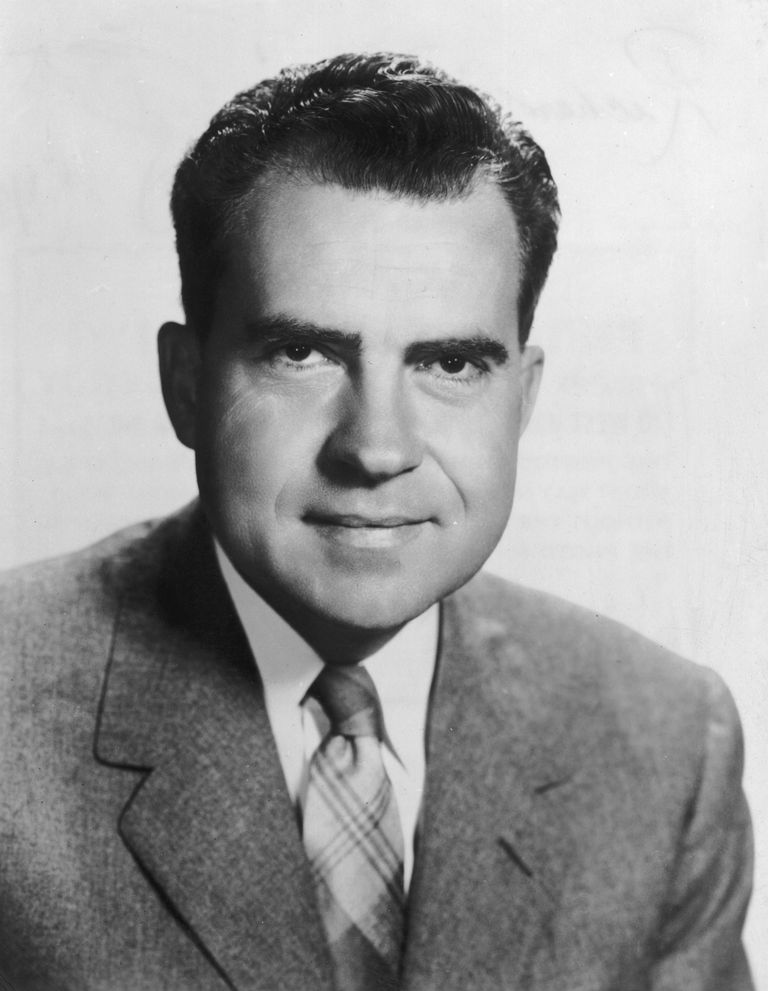Analyzing The U.S. Dollar's Performance: A Look At The First 100 Days And The Nixon Presidency

Table of Contents
The Bretton Woods System and its Demise
Understanding the Bretton Woods Agreement
The Bretton Woods Agreement, established in 1944, created a fixed exchange rate system designed to foster international monetary stability after World War II. This system pegged most currencies to the U.S. dollar, which in turn was convertible to gold at a fixed rate of $35 per ounce.
- Gold Convertibility: Central banks could exchange their dollar holdings for gold at this fixed rate.
- The US Dollar as World Reserve Currency: The U.S. dollar became the primary reserve currency, facilitating international trade and investment.
- Limitations of the System: The system's inherent rigidity proved unsustainable in the face of evolving global economic conditions.
Growing Pressure on the Dollar
By the late 1960s, the Bretton Woods system faced increasing pressure. Several factors contributed to its instability:
- Vietnam War Costs: The escalating costs of the Vietnam War fueled inflation in the United States.
- Inflationary Pressures: Domestic inflation eroded the purchasing power of the dollar, undermining its value relative to other currencies.
- Rising Foreign Holdings of Dollars: As the U.S. ran persistent trade deficits, foreign countries accumulated vast reserves of dollars, exceeding the amount of gold held by the U.S. Treasury.
Nixon's Decision to Close the Gold Window
On August 15, 1971, President Nixon announced a series of measures, collectively known as the "Nixon Shock," that effectively ended the Bretton Woods system. The most significant decision was the closure of the "gold window," meaning the U.S. would no longer exchange dollars for gold.
- Ending Gold Convertibility: This severed the link between the dollar and gold, ending the fixed exchange rate system.
- Impact on International Exchange Rates: The immediate consequence was significant volatility in international exchange rates, as currencies began to float against each other.
- Initial Market Reactions: Global financial markets reacted with uncertainty and concern, leading to short-term disruptions.
The First 100 Days of a Floating Dollar
Economic Uncertainty and Market Volatility
The period following the closure of the gold window was marked by considerable economic uncertainty and market volatility. The transition to a floating exchange rate system created a new, unpredictable environment.
- Fluctuations in Exchange Rates: Currency values experienced significant fluctuations as supply and demand forces took center stage.
- Speculation in Foreign Currency Markets: Increased speculation in foreign currency markets added to the instability.
- Initial Response of International Banks and Businesses: International banks and businesses grappled with the implications of the changing exchange rate regime.
Domestic Economic Policies
During Nixon's first 100 days post-gold window closure, the administration implemented various domestic economic policies aimed at stabilizing the economy:
- Wage and Price Controls: Nixon imposed wage and price controls to curb inflation.
- Fiscal Policy Adjustments: Fiscal policy changes were implemented to attempt to influence economic growth and control inflation.
- Impact on Inflation: The effectiveness of these policies in managing inflation was debated and their long-term impact was mixed.
International Reactions and Negotiations
Nixon's actions sparked widespread international reactions and negotiations:
- Smithsonian Agreement: The Smithsonian Agreement of 1971 attempted to establish a new system of adjustable exchange rates, but it proved short-lived.
- Attempts to Create a New Stable International Monetary System: International efforts continued to seek a more stable international monetary system, eventually leading to the current floating exchange rate regime.
Long-Term Impacts of Nixon's Actions on the U.S. Dollar
The Era of Floating Exchange Rates
The abandonment of the Bretton Woods system ushered in an era of floating exchange rates, profoundly impacting the global economy:
- Increased Market Volatility: Currency values became more susceptible to market forces, leading to increased volatility.
- Greater Influence of Supply and Demand: Supply and demand became the primary determinants of exchange rates.
- Impact on International Trade: Fluctuating exchange rates added complexity and risk to international trade.
The Dollar's Role in the Global Economy
The U.S. dollar retained its position as the world's dominant reserve currency, but its role evolved after Bretton Woods:
- Increased Competition from Other Currencies: Other currencies, such as the euro and the yen, gained prominence in international finance.
- Relative Strength and Weakness over Time: The dollar's relative strength and weakness against other currencies has fluctuated over time, reflecting changing economic conditions and geopolitical factors.
Lessons Learned from the Nixon Shock
The "Nixon Shock" offers valuable lessons about currency management and international economic relations:
- Importance of Currency Stability: Maintaining currency stability is crucial for fostering international trade and investment.
- Challenges of Managing a Global Monetary System: Managing a global monetary system effectively requires international cooperation and flexibility.
Conclusion
The Nixon Shock, and specifically the closure of the gold window during Nixon's first 100 days, marked a pivotal moment in the history of the U.S. dollar and the global economy. The transition from a fixed to a floating exchange rate system had profound and lasting consequences. The increased volatility of exchange rates, the changing role of the dollar, and the need for international cooperation in managing the global monetary system are all key takeaways from this period. Continue your exploration of the history of the U.S. dollar. Learn more about the long-term implications of the Nixon Shock by researching further into the floating exchange rate system and the evolution of the dollar's role in the global economy. Understanding the past performance of the U.S. dollar provides valuable insight into its present and future trajectory.

Featured Posts
-
 Months Long Lingering Of Toxic Chemicals After Ohio Train Derailment
Apr 28, 2025
Months Long Lingering Of Toxic Chemicals After Ohio Train Derailment
Apr 28, 2025 -
 New York Mets Complete Starting Pitching Staff
Apr 28, 2025
New York Mets Complete Starting Pitching Staff
Apr 28, 2025 -
 January 6th Hearing Witness Cassidy Hutchinson To Publish Memoir
Apr 28, 2025
January 6th Hearing Witness Cassidy Hutchinson To Publish Memoir
Apr 28, 2025 -
 Chaos And Confusion Before Weezer Bassists Wife Shooting Lapd Video Shows
Apr 28, 2025
Chaos And Confusion Before Weezer Bassists Wife Shooting Lapd Video Shows
Apr 28, 2025 -
 Dwyane Wade On Doris Burkes Expert Thunder Timberwolves Commentary
Apr 28, 2025
Dwyane Wade On Doris Burkes Expert Thunder Timberwolves Commentary
Apr 28, 2025
